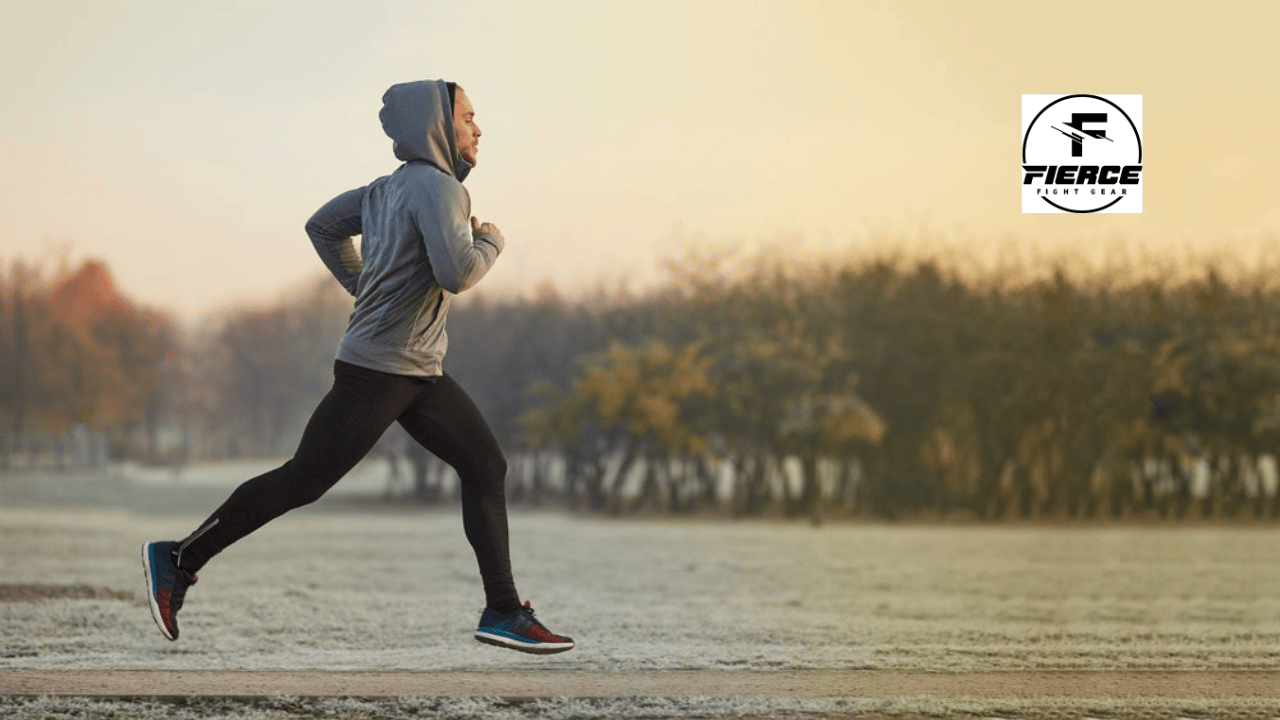Speed is a cornerstone of success when it comes to boxing. It’s not just about throwing punches; it’s about how quickly and effectively those punches are thrown. In this article, we’ll delve into the pivotal role that speed plays in a boxer’s journey, and why it can make all the difference between victory and defeat. How fast can boxers run? Let’s find out.
The Crucial Role of Speed in Boxing
Boxing is a sport where every fraction of a second counts. Speed isn’t merely a flashy attribute; it’s an essential ingredient for success in the ring. The ability to deliver rapid punches, move swiftly to avoid opponents, and score points with pinpoint accuracy is what sets champions apart. So, just how fast can boxers run to achieve these feats?
The Need for Speed
To truly comprehend the importance of speed in boxing, let’s explore some real-life examples of renowned boxers celebrated for their lightning-quick moves:
- Muhammad Ali: Often hailed as “The Greatest,” Ali’s incredible speed was his trademark. His ability to “float like a butterfly, sting like a bee” showcased his unparalleled speed and agility.
- Sugar Ray Leonard: Leonard’s blistering hand speed and nimble footwork made him a dominant force in the boxing world. He consistently outmaneuvered his opponents with rapid, precise combinations.
- Floyd Mayweather Jr.: Mayweather’s defensive speed and quick counters made him one of the most elusive boxers in history. His knack for slipping punches and counter attacking with lightning speed was a sight to behold.

How fast can boxers run: Quantifying a Boxer's Running Speed
So, just how fast can boxers run? The speed at which a boxer can run during regular workout or roadwork, which is a common component of their training regimen, can vary depending on several factors. Roadwork typically involves running outdoors, and the pace can differ from boxer to boxer. It’s not solely about top-end speed but also about endurance and stamina. Here’s an overview of the typical running speeds you might observe during a boxer’s roadwork:
- Moderate Pace: Many boxers maintain a moderate running pace during roadwork, typically running at a speed of around 7 to 8 miles per hour (11 to 13 kilometers per hour). This pace allows them to cover a significant distance while keeping their heart rate elevated for an extended period.
- Interval Training: Some boxers incorporate interval training during their roadwork sessions. This involves alternating between periods of faster running and slower jogging or walking. During the faster intervals, boxers may reach speeds of 9 to 10 miles per hour (14 to 16 kilometers per hour) or even higher, and then slow down for recovery.
- Steady-State Running: Others prefer a steady-state running approach, maintaining a consistent speed throughout the session. In such cases, they might run at a pace closer to 6.5 to 7.5 miles per hour (10.5 to 12 kilometers per hour) to build endurance over a longer distance.
- Individual Variations: The speed of a boxer’s roadwork can also vary based on their weight class and individual fitness levels. Heavier weight classes may not reach the same top speeds as lighter weight classes, as their training focuses more on endurance.
- Progression: Boxers often aim to progress over time. As their conditioning improves, they might increase their running speed, duration, or intensity to continually challenge their cardiovascular and muscular systems.
It’s essential to note that the primary goal of roadwork in boxing is not just to reach high speeds but to develop cardiovascular endurance, build leg strength, and prepare for the rigors of a full boxing match. The specific speed a boxer runs during roadwork is determined by their training plan, goals, and physical condition.
Factors Influencing a Boxer's Running Speed
A boxer’s running speed is the product of various interconnected factors, all of which contribute to their ability to move swiftly. Understanding these elements can provide valuable insights into a boxer’s speed and agility. Here are the key factors that influence a boxer’s running speed:
Genetics
Genetics play a substantial role in determining an individual’s baseline running speed. Some boxers are naturally predisposed to be faster due to their genetic makeup. Fast-twitch muscle fibers, which contract quickly and generate explosive power, are often more prevalent in individuals with a genetic inclination for speed. These fibers enable rapid movements and are a vital component of a boxer’s speed.

Training
Speed in boxing isn’t solely a gift from genetics; it’s a skill that can be honed and refined through diligent training. Boxers dedicate themselves to rigorous training regimens designed to enhance their speed. This includes exercises and drills that focus on building explosive power, agility, and rapid reflexes. Hand-eye coordination is another critical aspect of a boxer’s training. The ability to process visual information quickly and translate it into precise movements is paramount for fast and accurate punching.
Diet
Proper nutrition plays a fundamental role in sustaining optimal speed. A balanced and well-considered diet is essential for a boxer’s overall performance. Carbohydrates are a primary source of energy for boxers, as they provide the fuel necessary for intense training sessions and fights. Protein is crucial for muscle repair and growth, which is essential for maintaining speed and power. Adequate hydration is also a key dietary consideration, as dehydration can significantly affect a boxer’s performance and speed. Maintaining an ideal weight is crucial, as excess body fat can impede a boxer’s speed and agility. Boxers must strike a balance between strength and speed by carefully managing their body composition.
READ ALSO: The Best Boxing Training Equipment: All You Need To Know About Boxing Equipment
Training Techniques to Improve Speed for Boxers
Boxing requires not just power but also speed and agility. To enhance their speed, boxers incorporate a variety of workouts and exercises into their training routines. Here are some key elements:
1. Sprint Training
- Sprinting is a fundamental exercise for developing speed. Boxers perform short, intense sprints, typically covering distances from 40 to 100 meters.
- Benefits: Sprint training improves acceleration, explosiveness, and fast-twitch muscle development, all of which are crucial for quick movements in the ring.
- Tips for Readers: Incorporate sprint intervals into your training regimen. Start with shorter sprints and gradually increase the distance and intensity as your conditioning improves.
2. Agility Drills
- Agility drills involve exercises like ladder drills, cone drills, and ladder footwork. These drills focus on quick changes in direction, coordination, and lateral movement.
- Benefits: Agility drills enhance a boxer’s ability to move laterally, evade opponents, and maintain balance during rapid exchanges in the ring.
- Tips for Readers: Set up a simple agility course with cones or markers in your training area. Practice precise footwork and directional changes to improve your agility.
3. Footwork Training
- Footwork drills are a cornerstone of boxing training. Boxers work on their stance, balance, and movement. These drills include shadowboxing, ladder drills, and speed bag work.
- Benefits: Effective footwork is essential for quick, precise movement and maintaining balance during defensive and offensive maneuvers.
- Tips for Readers: Dedicate time to practice your boxing stance and footwork regularly. Focus on maintaining balance and proper positioning during your punches and defensive movements.
4. Plyometric Exercises
- Plyometric exercises like box jumps, squat jumps, and burpees improve explosive power and quick muscle contractions.
- Benefits: Plyometrics help boxers generate rapid force, which is essential for quick punches and movements in the ring.
- Tips for Readers: Start with basic plyometric exercises and gradually increase the intensity. Ensure proper form to prevent injuries.
5. Core Strength Training
- Strong core muscles are crucial for stability and generating power. Boxers incorporate exercises like planks, Russian twists, and leg raises to strengthen their core.
- Benefits: A strong core supports quick, controlled movements and aids in maintaining balance during fast exchanges.
- Tips for Readers: Include core exercises in your routine to improve your overall stability and speed in boxing.
6. Interval Training
- Interval training combines periods of high-intensity exercises (like sprints or pad work) with short rest intervals.
- Benefits: Interval training improves cardiovascular endurance, allowing boxers to maintain their speed and power throughout a fight.
- Tips for Readers: Start with shorter intervals and progressively increase the intensity and duration. Interval training is an effective way to simulate the demands of a boxing match.
Incorporating these training techniques into your regimen can help enhance your speed and agility, critical elements in the world of boxing. Remember to start at an appropriate level for your fitness and gradually progress to more challenging workouts. Always consult with a coach or fitness professional to ensure you’re training safely and effectively.
Build Your Speed With Fierce Fight Gear
Our gear is specifically crafted to boost your speed and performance. From boxing gloves to protective equipment, we’ve got you covered. Our quality and durability are unmatched.
What’s in Our Arsenal?
- Boxing shorts for swift and agile movement
- Vests, T-shirts, and robes for comfortable training
- Jackets to keep you warm on your way to success
- Head guards, boxing gloves, and groin guards for protection
- Pads to sharpen your skills.
Ready to become a speedster in the ring? We’re here to empower your journey and help you become a faster, stronger fighter. Get the right fight wear today!
In conclusion, a boxer’s running speed is a result of a combination of factors, including genetics, training, and diet. While genetics may provide a foundation, it’s the training and nutrition that shape a boxer’s speed into a powerful and precise asset. By understanding and optimizing these factors, boxers can consistently enhance their running speed and, by extension, their performance in the ring.
